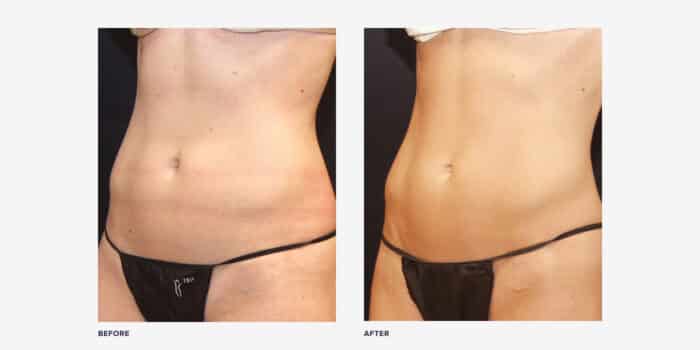Debate is fundamental to medicine—it encourages critical thinking and drives scientific progress. And the field of aesthetics is no exception. At cosmetic conferences, doctors routinely (and respectfully) spar onstage, hashing out procedures and protocols that have sparked controversy or divided the industry. For better or worse, plastic surgery provides no shortage of hot-button issues—from the Brazilian butt lift’s evolving safety profile to the most sensible approach to treating breast implant illness to the does-it-or-doesn’t-it dispute around filler’s ability to lift the face. These debates are fueled by evidence—there’s almost always data to support both viewpoints—and can be passionate and persuasive, but rarely is there a clear winner or loser. Rather, it’s on us to weigh the facts and adopt a stance.
In the spirit of healthy discourse, we bring you our new series Doctors Debate, where two esteemed physicians argue the merits of buzzworthy treatments. Here, in our first installment, we’re exploring high-definition liposuction (aka abdominal etching) with Dr. David A. Sieber, a board-certified plastic surgeon in San Francisco and high-def proponent, and Dr. Adam Kolker, a board-certified plastic surgeon in New York City who does not support the procedure.
During high-definition liposuction, plastic surgeons, aided by ultrasound energy, remove fat from various layers in order to carve out the underlying musculature. While the abdomen is a common canvas, the technique can also be applied to the arms, chest, back, thighs, and other parts. High-def requires specialized training—and scrupulous patient selection—and results can run the gamut, from subtly toned to muscle-suit fake. Critics commonly express concerns over how etched bodies may heal in the short term or wear over time, particularly if patients fail to maintain the rigorous fitness regimen that qualified them for the operation in the first place.
Ahead, our experts make the case for and against high-definition liposuction—and we attempt to tease out a bottom line on the safety and efficacy of this popular procedure.
The case for high-definition liposuction
According to Dr. David A. Sieber
“High-def allows me to take someone who is really active and make them look like all their hard work is actually doing something.”
“High-definition lipo is a type of liposuction that was more or less invented and popularized by Dr. Alfredo Hoyos of Colombia, who’s been performing it now for 18 years. It’s a method that [American plastic surgeons] aren’t trained on—you currently need to leave the U.S. to learn how to do it well. In the U.S., we’re taught to just remove areas of stubborn fat [via traditional tumescent liposuction]—we’re getting the fat wet with a solution and then sucking it out. High-def is different in that we use some sort of technology, typically ultrasound—a machine such as VASER—to help emulsify the fat, and we’re removing fat in more superficial areas, with the purpose of creating more definition in line with the patient’s anatomy.”
Who is a good candidate for high-def liposuction?
“Those who get the best results from high-def lipo are thin and fit. They eat right and exercise yet, despite their efforts, still can’t achieve the results they desire. High-def allows me to take someone who is really active and make them look like all their hard work is actually doing something. High-def lipo is not for someone who doesn’t work out or eat well, it’s not for someone with a high BMI, it’s not for someone with skin laxity. A lot of high-def doubters see it as being a substitute for regular liposuction—but that’s not necessarily true. It’s for a very well-defined category of patients—it’s not a procedure for everyone.
“The whole point of high-def is really to expose the muscles underneath in an anatomically safe fashion that’s specific for that patient. So if you don’t have a lot of muscles, you’re not going to have a lot of definition unless we leave a whole lot of fat [in an attempt to accentuate areas where muscles exist]. And to me, leaving excessive amounts of fat just looks silly. High-def liposuction is all about peaks and valleys—knowing where to take fat from and knowing where to leave some of the fat.
“I realize a lot of doctors are against this procedure, but I don’t have any reservations. The reality is, with high-def lipo, each surgeon performing the operation will have their own aesthetic, from very natural looking to really sharp, angular, and sort of fake looking. And it’s true, some aesthetics are not going to age well. But if you do the technique properly and you’re really making sure you’re adhering to the patient’s anatomy, it should age just fine.
“I think that arguing about potential weight gain is nonsensical. It doesn’t matter what type of lipo you do on someone, if they gain weight in the future, that result probably isn’t going to look good. If someone gets pregnant after high-def, I can’t predict how they’re going to look post-pregnancy, because I don’t know what’s going to happen with their skin and muscles—there’s a huge genetic component in play.
“I’ve become increasingly more blunt with patients about how important it is to maintain a healthy lifestyle after this surgery. It’s like, if you were to buy a Ferrari and put vegetable oil in it instead of premium gasoline, you would ruin your investment, right?
“As with any other procedure, there are certain risks—but if your surgeon is trained properly and has the correct instruments, it’s not a dangerous operation. It’s not going to create a bunch more morbidity [complications] after. In my own personal hands, I have fewer contour irregularities now doing high-def than I did with basic lipo. To me, the outcomes are worth the risk.”
The case against high-definition liposuction
According to Dr. Adam Kolker
“In many individuals’ hands, high-definition liposuction tends to produce a less natural look.”
“The foundation of high-definition liposuction or abdominal etching is to create what appears to be muscle contour definition in a different plane than it should exist. I think that’s the underpinning of why, in many individuals’ hands, high-definition liposuction tends to produce a less natural look. Muscle definition should be in the muscle plane, not the soft tissue plane.
“There are two discrete planes of fat beneath the skin—the superficial plane and the deep plane. And there’s a layer called the SFS, or superficial fascial system, that divides these fatty planes. With classic liposuction, we focus more significantly on the deep plane, where we can mine more fat more safely, in the sense that we’re leaving a thin veil of subcutaneous fat [directly under the skin], to camouflage any potential irregularities. The deeper plane of fat is considerably more forgiving. However, when we change planes and go above that veil of the SFS, it’s tiger country. Immediately beneath the skin, you have to be extremely careful, because the body is going to heal [after surgery]—and the way the body heals is by creating a little bit of scar tissue. Sometimes that scar tissue remains nice and soft, and sometimes it tethers, giving you lumps and bumps. The superficial plane is really something you have to protect.
“Abdominal etching is predicated on suctioning immediately beneath the skin—it violates that superficial plane. Surgeons are artificially creating inscriptions in the soft tissue. If you think about an incredibly toned abdomen, there’s a line that goes right down the middle called the linea alba, which separates the two sides of the rectus muscle. Then, in between each of the six-pack muscles is something called an inscription. And outside the six pack, there’s the linea semilunaris, a contour line between the rectus muscle and the external oblique. Those are the lines that surgeons who do high-def are trying to achieve.
“Some actually do fat grafting at the same time—they take fat and fill the intervening spaces between those inscription lines [to build up or pad areas of muscle, for greater contrast between the hills and valleys]. Over time, as an individual gains or loses weight, those fatty pockets are going to change in size. It has the potential to look bizarre.
“From a safety perspective, we’re talking about exposing somebody to the potential need for additional treatments or surgery [to correct potential contour irregularities from high-def]. While negatives can come up with any lipo procedure, focusing on the deeper plane minimizes the chance of developing wrinkling, rippling, indentations, dimples, and odious scarring that can happen when you go into the superficial plane.
“With high-definition liposuction, there are times when it works out well and there are times when it doesn’t. And many surgeons, myself included, are not willing to take that risk.
“[Besides,] we can absolutely provide contours with classic liposuction. There’s no prescription to uniformly remove the exact same amount of fat from one centimeter to another across the abdomen. Those same contour lines that are highlighted in high-def—the linea alba, the linea semilunaris, the inscription lines delineating the six-pack muscles—we can be more liberal in suctioning those zones. But it’s important not to etch them in the superficial plane. There’s a big difference between sculpting and etching. Traditional liposuction is inherently sculptural—it’s meant to expose the underlying muscle definition without artificially trying to create it.”

The bottom line
To qualify for any type of liposuction, you should be at or close to an ideal yet sustainable weight and have relatively taut, elastic skin that will snap back post-suction, shrink-wrapping over its revised foundation. For high-definition lipo, the prereqs are more stringent. Doctors generally like patients to have a BMI under 28 and to demonstrate a strong dedication to a healthy lifestyle and rigorous fitness regimen, since outcomes depend on staying in shape.
If you’re considering high-def lipo, do your research and vet your surgeon. There are providers who market their approach as high-def “even though they have no formal training and don’t know what they’re doing,” says Dr. Sieber. Choose a board-certified plastic surgeon who has received specialized training in the technique and is well known for performing it. (What makes a procedure dangerous—be it lipo, a deep plane facelift, or a BBL—typically has more to do with the person offering it than the specific technique they use.) Review dozens of before-and-afters, to make sure your surgeon’s aesthetic aligns with your own. And engage in some honest self-talk about your long-term commitment to wellness and workouts.
If high-def lipo isn’t for you, classic lipo can also deliver a strong, athletic appearance—but neither operation is risk- or maintenance-free. While Drs. Sieber and Kolker take different approaches to body contouring, they unequivocally agree that liposuction is not a weight-loss method or a substitute for routine exercise and a balanced diet.











